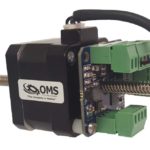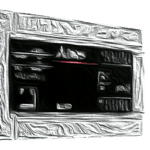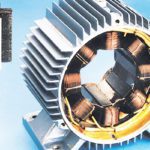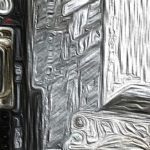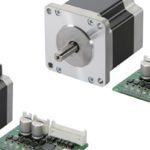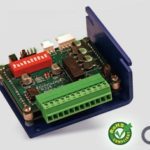Microstepping is driving a stepper motor at less the one full step per movement. Under usual operating conditions, a stepper motor operates by turning one full step with every pulse of current. Microstepping allows a motor to make far finer steps. This done by having the controller and drive send the proper kinds of current […]
FAQ: What drive conditions make stepper motors run poorly?
When selecting a drive for a stepper motor, remember that certain drive setups and may cause the stepper motor to run poorly. These include improperly sized motors, incorrect drive types and incompatible wiring schemes. Having a correctly sized stepper drive is vital. If this is not done, then there is the risk that the motor […]
FAQ: How do stepper drives work with stepper controls based on PLCs?
Programmable logic controllers, or PLCs, are computers that control automation and motion systems. They are real-time computers in which inputs must create outputs in limited time. They usually store programs that perform control algorithms in non-volatile memory or battery-backed memory. Using a PLC with a stepper drive allows control mechanisms to change using software control, […]
FAQ: How could drives soon make switched-reluctance motors more common?
One the main drawbacks to switched-reluctance motors come from their control and drive electronics. They must be accurate and responsive to monitor continually various aspects of the motor for it to run effectively. However, as technology improves switched-reluctance motors may become more common with the rise of improved drives and controllers. As mentioned in FAQ: […]
FAQ: Why are switched-reluctance motors (SRMs) so difficult to control?
Switched-reluctance motors have many advantages, including low cost and low energy use. However, their main drawback is they are difficult to control. This is for a variety of reasons. Namely, they need highly accurate position tracking, the inductance in the motor changes with the degree of alignment of their poles; they require unipolar drives, and […]
FAQ: How to choose a safety factor so a motor design lasts?
Engineers determining what stepper motor and drive to use should make sure to include a safety factor. This is because there could be some unanticipated loads or operating conditions that may affect the operation of the system. On the other hand, too large a safety factor has its drawbacks as well. These include wasted power […]
FAQ: What features need to be compatible for a stepper drive to run a given stepper motor?
When selecting a stepper drive, certain features must be compatible with the motor and the drive for the system to function. These include the current output of the drive, whether it is for unipolar or bipolar stepper motors, its voltage output and its wattage or power rating. All of these factors matter for their own […]
FAQ: How do AC stepper drives offer better torque-speed performance than DC?
When selecting stepper drives, AC and DC options are both readily available. However, AC drives can often provide better torque-speed performance than DC drives. There are a couple reasons for this. More current means more torque When driving stepper motors, the general rule of thumb tends to be the more current a drive can provide to […]
FAQ: How do stepper drives and motors get smooth motion and consistent torque at low speed?
Smooth operation at low speeds with consistent torque is possible using stepper motors and drives. It is accomplished by ensuring the drive and motor work together, and often by using microstepping. Microstepping is driving the stepper motor such that each pulse does not complete a full step. Rather, a partial step occurs. This allows the […]
FAQ: What is pole-damping technology in stepper drives?
Pole-damping technology refers to a unique method of microstepping employed by specially equipped stepper drives. Note that Lin Engineering trademarks the term Pole Damping, as it employs their proprietary technologies. Also do not confuse damping, which is the addition of components to a motor setup to reduce vibration and noise, with pole damping, which involves […]


